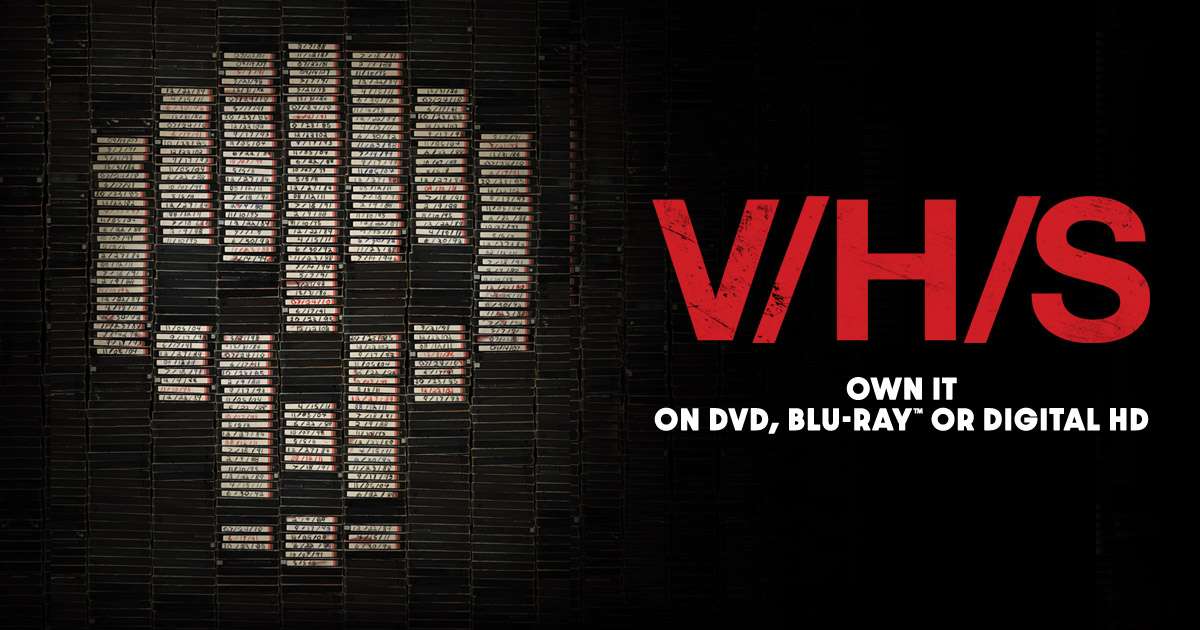V/H/S (2012)

“V/H/S,” released in 2012, is a groundbreaking horror anthology film that revitalized the found footage genre. Produced by Brad Miska and Bloody Disgusting, the film was directed by an ensemble of filmmakers, including David Bruckner, Ti West, Glenn McQuaid, and the duo of Adam Wingard and Simon Barrett. This unique format weaves together a series of short horror stories, each presented as a tape discovered by a group of criminals who are tasked with retrieving a mysterious video cassette. With its unsettling atmosphere and innovative storytelling, “V/H/S” delivers a spine-chilling experience that leaves a lasting impression on viewers.
The film opens with a framing narrative involving a group of young men who break into an abandoned house to steal valuable items. While rummaging through the premises, they come across a collection of VHS tapes and decide to watch them. This device sets the stage for the anthology format, allowing audiences to experience different horror stories that range in style, theme, and intensity. Each segment presents its own unique narrative, yet they are all connected through the overarching storyline of the characters searching for the tapes.
The first segment, titled “Amateur Night,” directed by David Bruckner, introduces a group of friends who are on a night out, equipped with hidden cameras to capture their escapades. As the night progresses, they encounter a mysterious woman, Lily, who reveals herself to be far more than they bargained for. This segment effectively builds tension, showcasing the juxtaposition of youthful bravado and the unexpected horrors that lurk beneath the surface. The use of first-person perspective heightens the suspense, making viewers feel as if they are part of the unfolding nightmare.
Next, “Second Honeymoon,” directed by Ti West, follows a couple on a road trip to celebrate their anniversary. The segment explores themes of intimacy and trust, as unsettling occurrences hint at a more sinister presence. Ti West’s direction is marked by a slow-building tension, culminating in a shocking climax that reinforces the notion that not all is as it seems. The stark contrast between the couple’s romantic moments and the creeping dread lurking in the background amplifies the horror.
In “Tuesday the 17th,” directed by Glenn McQuaid, the film takes a slasher approach, parodying classic horror tropes. A group of friends heads to a remote cabin in the woods for a getaway, only to be hunted by a masked killer. This segment cleverly subverts expectations, using digital effects to create a unique aesthetic that distinguishes it from its predecessors. The humor interspersed with the horror creates a distinctive tone, allowing for moments of levity amidst the terror.
The penultimate segment, “The Sick Thing That Happened to Emily When She Was Younger,” directed by Joe Swanberg, introduces a more psychological horror angle. Through a series of video calls, a woman named Emily reveals her disturbing experiences in her apartment, hinting at supernatural elements. The intimacy of the webcam format enhances the sense of unease, as the viewer is drawn into Emily’s increasingly bizarre and terrifying world. The segment blurs the line between reality and the supernatural, leaving viewers questioning the reliability of Emily’s narrative.
Finally, “10/31/98,” directed by Radio Silence, serves as the film’s climax. This segment follows a group of friends who attend a Halloween party, only to find themselves entangled in a horrific and supernatural experience. The segment is marked by intense action and chilling visuals, creating a palpable sense of dread as the friends confront their worst fears. The frenetic pacing and inventive camera work elevate the tension, culminating in a terrifying conclusion that resonates with the audience long after the film ends.

The success of “V/H/S” lies not only in its ability to deliver scares but also in its exploration of the nature of horror itself. The found footage format enhances the realism, immersing viewers in the characters’ experiences. The film’s use of low-fi aesthetics, grainy visuals, and unsettling sound design evoke a sense of nostalgia for the VHS era while simultaneously establishing a contemporary horror narrative. This unique approach allows the filmmakers to experiment with storytelling, crafting segments that are both innovative and terrifying.

In addition to its horror elements, “V/H/S” raises intriguing questions about technology and voyeurism. The characters’ desire to document their experiences often leads to dire consequences, emphasizing the dangers of recording and consuming media without considering the repercussions. The film serves as a commentary on society’s obsession with documentation and the blurred lines between entertainment and exploitation.

In conclusion, “V/H/S” is a masterful anthology that redefines the horror genre through its inventive storytelling and chilling visuals. With its ensemble of talented directors, the film successfully captures the essence of fear in various forms, from psychological horror to slasher thrills. As each segment unfolds, viewers are taken on a terrifying journey that explores the darker aspects of human nature and the consequences of curiosity. “V/H/S” stands as a landmark in horror cinema, inviting audiences to confront their fears while paying homage to the rich tradition of horror storytelling. Its impact continues to resonate within the genre, inspiring a new wave of filmmakers to experiment with the boundaries of horror and storytelling.











